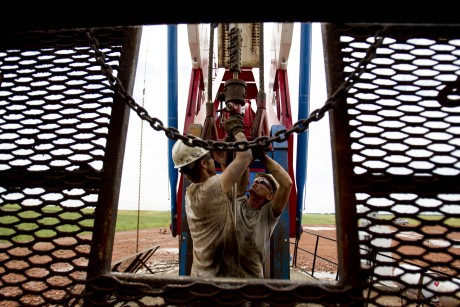Union: North Dakota Is The Most Dangerous Place In The Nation To Work

According to a press release sent out by the AFL-CIO, North Dakota is the most dangerous place in the nation to work. That’s based on worker fatality rate of 12.4 per 1,000 workers.
That’s not a good number, but it’s not surprising either. Like the other states on the bottom of the list – Wyoming, Montana, Alaska and Arkansas – North Dakota is an industry-heavy state. All the more so thanks to the oil boom. And like all those states except, perhaps, Arkansas North Dakota is home to some harsh weather conditions.
That all adds up to North Dakota being an inherently dangerous place to work. Not so much because of the laws, as the AFL-CIO suggests, but because of the nature of jobs here.
Take, for example, this list of the 10 most dangerous jobs in America. Truck driver, farmer/rancher and steel worker are all ranked. And those are all very prevalent jobs in this state.
Some jobs are just more dangerous than others, and no amount of legislation will change that.
Here’s the press release:
(BISMARCK, N.D.) According to a new AFL-CIO report, Death on the Job: The Toll of Neglect, 44 workers were killed in North Dakota in 2011, giving the state a worker fatality rate of 12.4 per 100,000 workers. At 50th in the nation for worker safety, North Dakota joins Wyoming, Montana, Alaska and Arkansas as states with the highest workplace fatality rates while New Hampshire, Rhode Island and Washington were states with the lowest rates.
The report notes that in 2011, there were 4,693 workplace deaths due to traumatic injuries and more than 3.8 million workers across all industries, including state and local government, who experienced work-related illnesses and injuries. As a comparison point, in 2010, 4,690 people died on the job. For the past three years, after years of steady decline the job fatality rate has essentially been unchanged, with a rate of 3.5/100,000 workers in 2011. Similarly for past two years there has been no change in the reported workplace injury and illness rate (3.5 per 100 workers), indicating that greater efforts are needed for continued progress in reducing job injuries and deaths.
The AFL-CIO report features profiles of workers’ safety and health in each state and includes national information on workplace illnesses, injuries and fatalities as well as the number and frequency of workplace inspections, penalties, funding, staffing and public employee coverage under the Occupational Safety and Health Act (OSH Act). The report also addresses delays in the rule-making process and emerging hazards such as pandemic flu and other infectious diseases. The report finds that in the face of an ongoing assault on regulations by business groups and Republicans in Congress, progress on many new important safety and health rules has stalled. The White House Office of Management and Budget has delayed needed protections including OSHA’s draft proposed silica rule which has been held up for more than 2 years.
“With the highest number of workplace fatalities in the country, our elected leaders should make safer workplaces a priority. Instead, too many politicians in our state made it their priority to weaken existing protections for injured workers and make it more difficult for North Dakotans to collectively bargain for safer working conditions,” said Tom Ricker, President, North Dakota AFL-CIO. “This shameful ranking shows North Dakota has much work to be done to ensure that no worker fears for his or her health and wellbeing on the job,”







